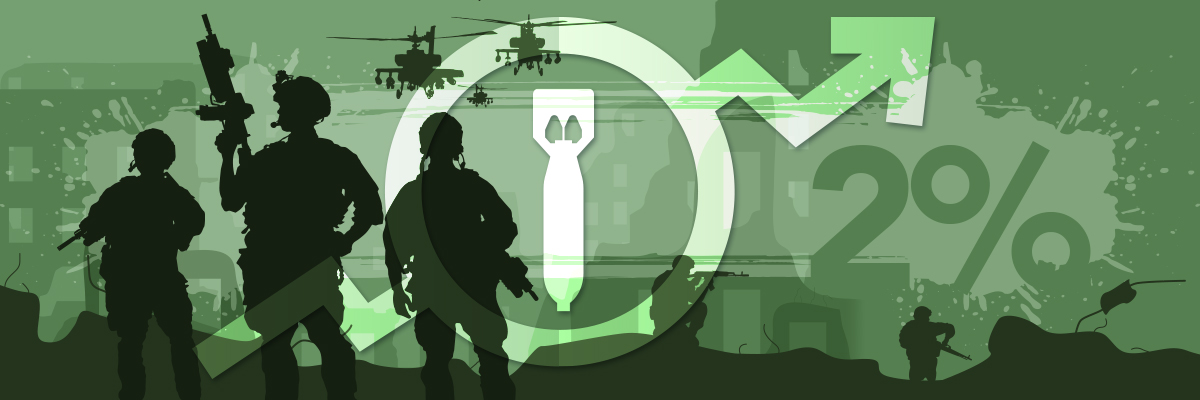Does war impact future supportability?

How does war impact future supportability? Integrated Logistic Support (ILS) is seldom the highest priority. Today, you can add growing world tensions and an arms race to the mix.
So, how will surges in defence spending, due to military offensives, like we’ve seen in Afghanistan, Iraq and now Ukraine, impact ILS investment? Quorum asks if war can ever improve future supportability, or whether it will always detract from it?
NATO and the Russo-Ukrainian war
Unless you’ve been living under a rock for the last seven months, you’ll know about the global ramifications of the ongoing Russo-Ukrainian war.
NATO has accelerated the ratification process for Sweden and Finland’s membership. A decision which ends decades of their neutrality and military non-alignment.
And, the surge in the market values of companies supplying weaponry points to the expectation of a significant increase in defence spending in the region. In fact, this is clearly reflected in rapidly changing European attitudes to boosting defence capability.
Now all NATO members are more likely to meet or exceed their annual defence budget commitments of 2% of GDP. It’s a target the UK have already hit, whilst budgeting to spend £6.2 billion more, in cash terms, in 2024/25 than last year (2020/21).

Capability versus supportability
But what does this mean for supportability? Because typically, when there is a crisis the spending priorities focus on capability rather than supportability.
After all once a military operation is underway, you’ll either have your supportability nailed down or you’ll need to improvise to prevail.
For example, in both Iraq and Afghanistan, Urgent Operational Requirements (UOR) enabled requisite equipment to be bought ‘off-the-shelf’ to meet immediate and unplanned for needs. This meant that there was significant investment in the more expensive equipment, following the crisis, to retrofit for supportability and bring it from ‘War to Core’.
However, this ‘needs must’ approach always has a high financial, resource and opportunity cost compared to investing wisely in ILS, upfront. Retrofitting will inevitably be sub-optimal from a supportability standpoint. Meaning that most off-the-shelf investment will be scrapped at the end of operations.

A route to enhanced supportability
So, what can ILS practitioners do to keep the benefits of planned supportability front of mind?
Even when war has broken out and immediate capability is in focus there will be some future planning and product development. It’s inevitable, albeit it could be accelerated and corners cut.
Hence, the need for supportability engineers to keep connects operational performance requirements with the use of ILS expertise supporting the design from the start. As well as being involved in designing for support.
Now, we can demonstrate the value of supportability more readily because Russia’s invasion of Ukraine has been accompanied by almost continual live footage of wasted resources. Delivered digitally, via the proliferation of ‘eyes in the skies’ drones,, so we can see the detailed logistics of war playing out, via social media. It means that now the impact of poor supportability planning is being shown to a global audience, alongside other military failings.
“Now the impact of poor supportability planning is being shown to a global audience, alongside other military failings.”

On the road to Kyiv
In Ukraine, we’re not just witnessing atrocities and unnecessary human suffering, we’re seeing extraordinary waste across the board. There are vast quantities of expensive and highly technical equipment being abandoned in front of a global audience.
Recall the image of the Ukrainian farmer towing away a Russian tank, using his old tractor, when the tank convoy was on the road to Kyiv.
The planned rapid seizure of Ukraine’s capital was dependent on operational tanks, but critical spares were being manufactured in a Ukrainian factory which was still in its control when the convoys started to fail. We then witnessed the remaining Russian hopes for a tenable supportability solution being crushed when much of the factory was decimated by its own attempts to seize it.

In Summary
Drones, digital connectivity and the reach of social media in the Russo-Ukrainian conflict are providing wide-reaching insights into the true operational capability of equipment and a clear lack of supportability planning.
Will this convince future stakeholders across the whole value chain of the integral role ILS plays in delivering reliable products and services to defence? It should do.
Because while surges in defence spending can detract from supportability investment, to fuel immediate capability, Russia’s war against Ukraine is showing us why we have to plan effectively to improve future supportability. Why would you ever risk the huge operational and financial impact of undervaluing the role of ILS?
+44 (0)1952 671950
Your support engineering insights…
Register for the latest news, direct to your mailbox!



